Complete Guide to Java Networking

Overview
Java is a dependable stronghold in the programming domain, and networking is its key link. The Complete Guide to Networking in Java guides both newbies and seasoned developers as they navigate the complexities of networking programs. This manual simplifies data transfer, socket management, and protocol handling. Dive into client-server communication and internet protocols with clear examples and step-by-step instructions. Improve your knowledge of the Java Network API, threading, and asynchronous activities. Unlock the ability to create effective networked applications, developing a strong link between theory and practice.
What is Networking in Java?
Networking is the backbone for communication between different devices and systems in the programming world. Java, a flexible and widely used programming language, provides comprehensive tools and modules that enable seamless networking.
Networking Fundamentals
In Networking in Java, networking refers to the capacity of Java programs to communicate and exchange data via a network, which might be a local network or the wide internet landscape. It enables developers to design apps that can transmit and receive data, making it a necessary component of modern software development.
Key Components
To make networking jobs easier, Java provides a broad collection of classes and APIs (Application Programming Interfaces). The java.net package is at the heart of these features, providing classes such as Socket and ServerSocket for low-level network connection. Sockets enable programs to connect, whereas ServerSockets allow apps to wait for incoming connections.
Client-Server Communication
The client-server architecture is essential to Java networking. A server accepts connections from clients and answers their requests. Clients begin communication with the server by opening a socket and connecting it to the IP address and port of the server. The server accepts the client's connection, and data exchange commences.
URL and HttpURLConnection
Java's networking capabilities go beyond simple communication. The java.net package also offers classes for dealing with URLs (Uniform Resource Locators). The URL class lets you parse, construct, and manipulate URLs, while the HttpURLConnection class lets you make HTTP requests to interact with web resources.
Socket Communication
In Java, sockets are the foundation of network communication. They support TCP (Transmission Control Protocol) and UDP (User Datagram Protocol) communication. TCP enables reliable and orderly data transport, making it ideal for cases requiring data integrity. On the other hand, UDP is utilized when speed is more important than dependability since it allows for quicker but possibly random data delivery.
Important Points
Resource management is a critical aspect of building robust network applications in Java. In networking, resources encompass a wide range of elements, including network sockets, memory, and CPU utilization. Efficiently managing these resources is essential to ensure that your Java networking application runs smoothly and avoids potential bottlenecks or failures.
One fundamental resource management strategy is limiting the number of concurrent connections. This is especially important to prevent overloading your server or network infrastructure. By setting connection limits, you can prioritize requests and allocate resources effectively. Java offers mechanisms to control concurrent connections, such as thread pools and connection pooling libraries, which can be utilized to strike a balance between resource allocation and application performance.
Exception handling plays a pivotal role in resource management within network applications. Methods involved in network operations, such as socket creation or data transmission, can throw exceptions like IOException, SocketException, or various other network-related exceptions. It is imperative to anticipate and handle these exceptions gracefully in your code to prevent application crashes and resource leaks. Proper error handling and resource cleanup ensure that the application can gracefully recover from issues and release allocated resources, contributing to the overall stability and reliability of the networking application.
When delving into specific network protocols like HTTP, FTP, or SMTP, it's crucial to understand their inner workings and efficiency considerations. Each protocol operates differently, and gaining insight into their nuances is essential for optimizing network communication. For instance, HTTP employs request-response cycles, while FTP focuses on file transfers, and SMTP manages email communication. Understanding these protocols allows you to fine-tune your Java networking code for efficiency and performance, whether that involves optimizing data transmission, managing connections, or handling a high volume of concurrent clients.
In conclusion, resource management, exception handling, and protocol details are integral components of building effective Java networking applications. Efficiently managing resources and gracefully handling exceptions ensures the application's stability, while a deep understanding of network protocols empowers developers to create efficient and optimized networked systems. Balancing theory and practice, Java remains a dependable stronghold in the world of networking, and mastering these aspects is essential for both newcomers and seasoned developers in this domain.
Networking in Java allows developers to construct programs that connect with other devices and services over diverse networks. The java.net package's broad set of classes and APIs simplifies networking activities, allowing programmers to focus on designing strong and feature-rich applications rather than becoming mired in complex networking protocols. Developers can craft applications that seamlessly integrate with the interconnected digital landscape by using Java's networking features.
Common Protocols of Networking in Java
Networking protocols provide the foundation for smooth communication between devices and systems in the Java programming environment. These protocols simplify data sharing, allowing programs to execute seamlessly across networked contexts. In this section, we will look at some of the most prevalent protocols used in Java networking and their responsibilities and importance.
TCP/IP Protocol Suite:
The Transmission Control Protocol/Internet Protocol (TCP/IP) suite is the cornerstone of Internet communication. It divides data into packets, which are subsequently sent over the network. TCP guarantees that these packets arrive in the right order and without mistakes, ensuring that data transport is dependable. In contrast, IP manages routing and addressing, ensuring packets reach their intended destinations.
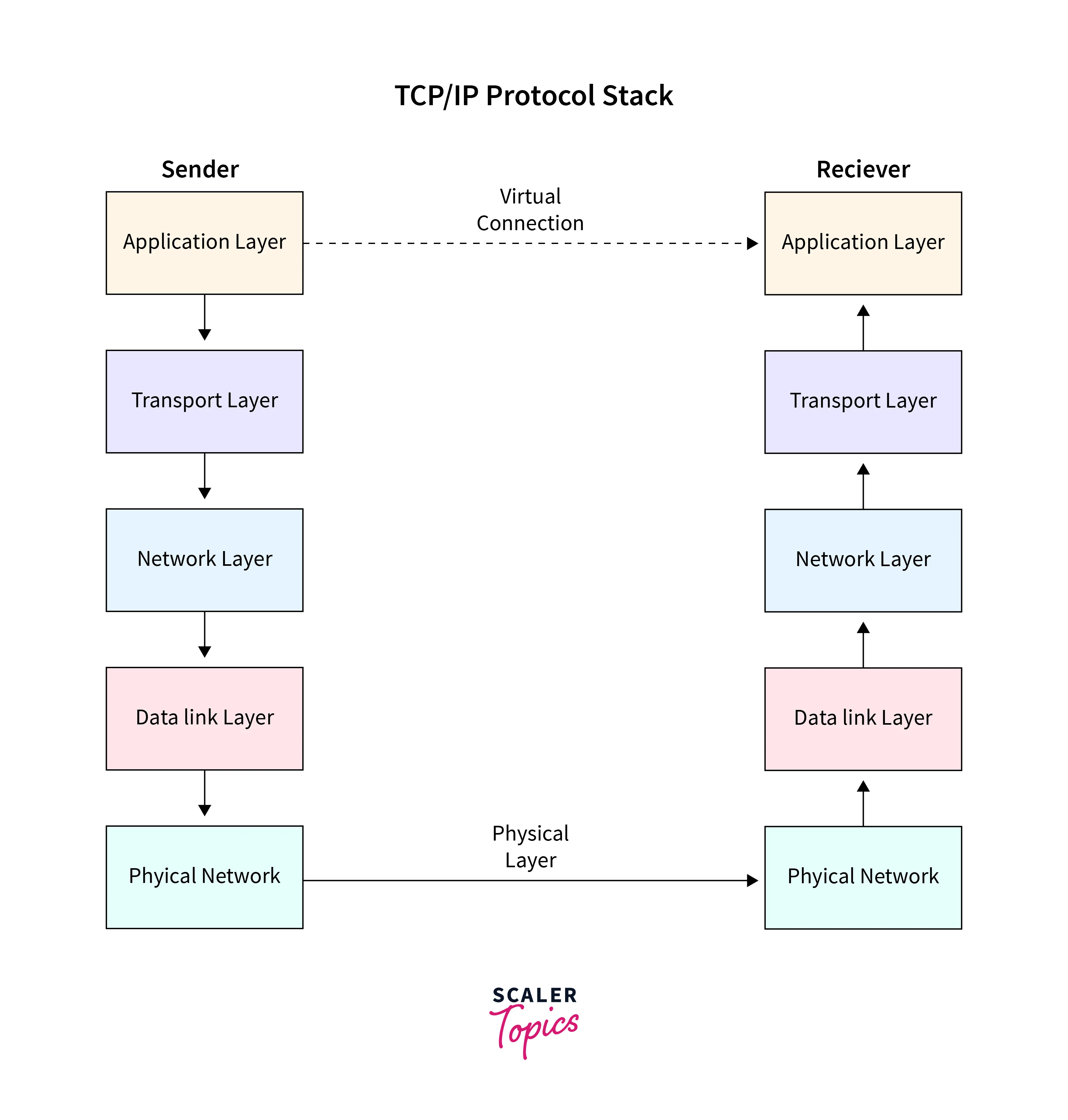
HTTP/HTTPS Protocol:
The Hypertext Transfer Protocol (HTTP) and its secure version, HTTPS, are employed for web communication. They allow text, pictures, videos, and other resources to be exchanged between a web server and a client (often a web browser). HTTPS encrypts data using SSL/TLS protocols to protect data confidentiality and integrity.
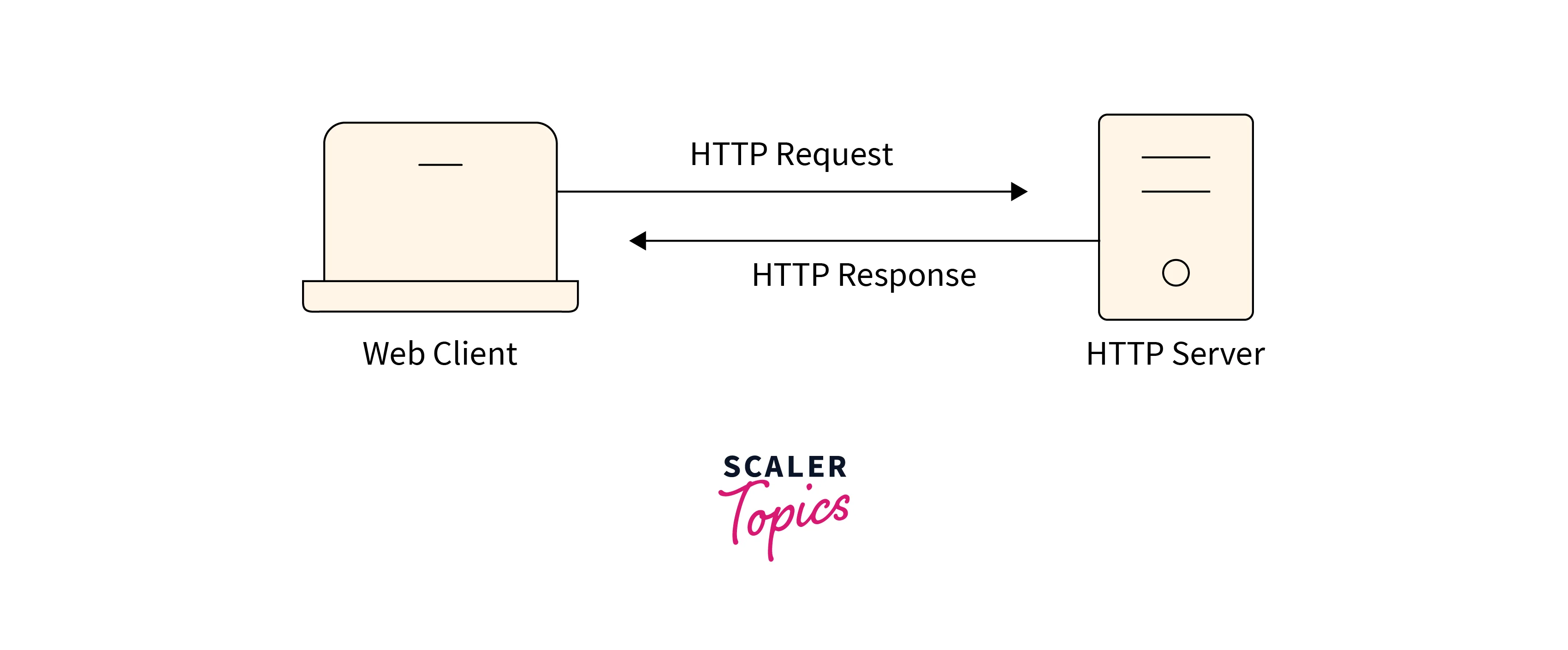
FTP Protocol:
The File Transfer Protocol (FTP) is a protocol that allows files to be sent between a client and a server. The networking libraries in Java provide means for implementing FTP, allowing users to upload, download, and manage data remotely.
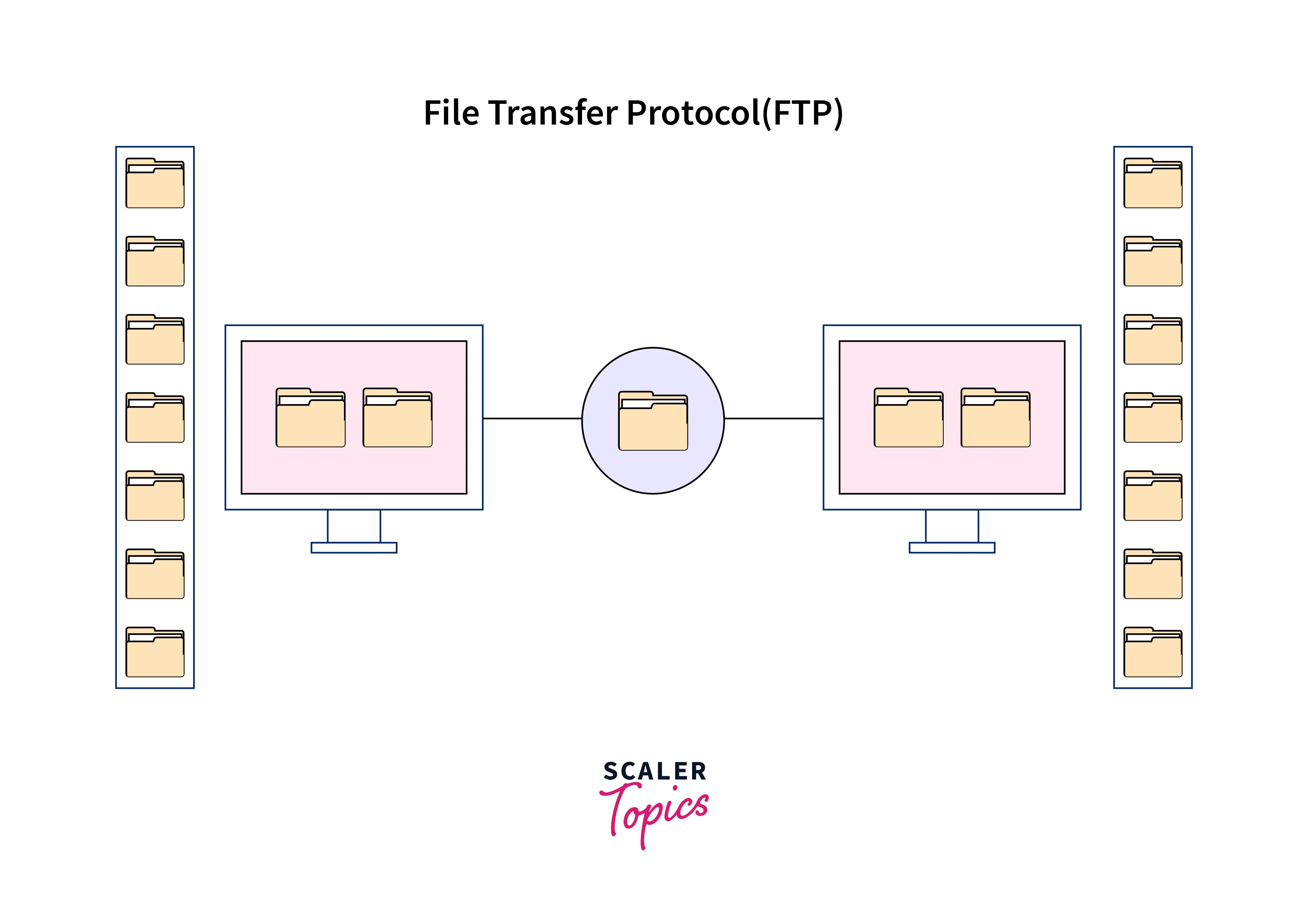
SMTP/POP3/IMAP Protocols:
Java networking uses Simple Mail Transfer Protocol (SMTP) to send emails and Post Office Protocol 3 (POP3) or Internet Message Access Protocol (IMAP) to receive them. These guidelines assure a continuous flow.
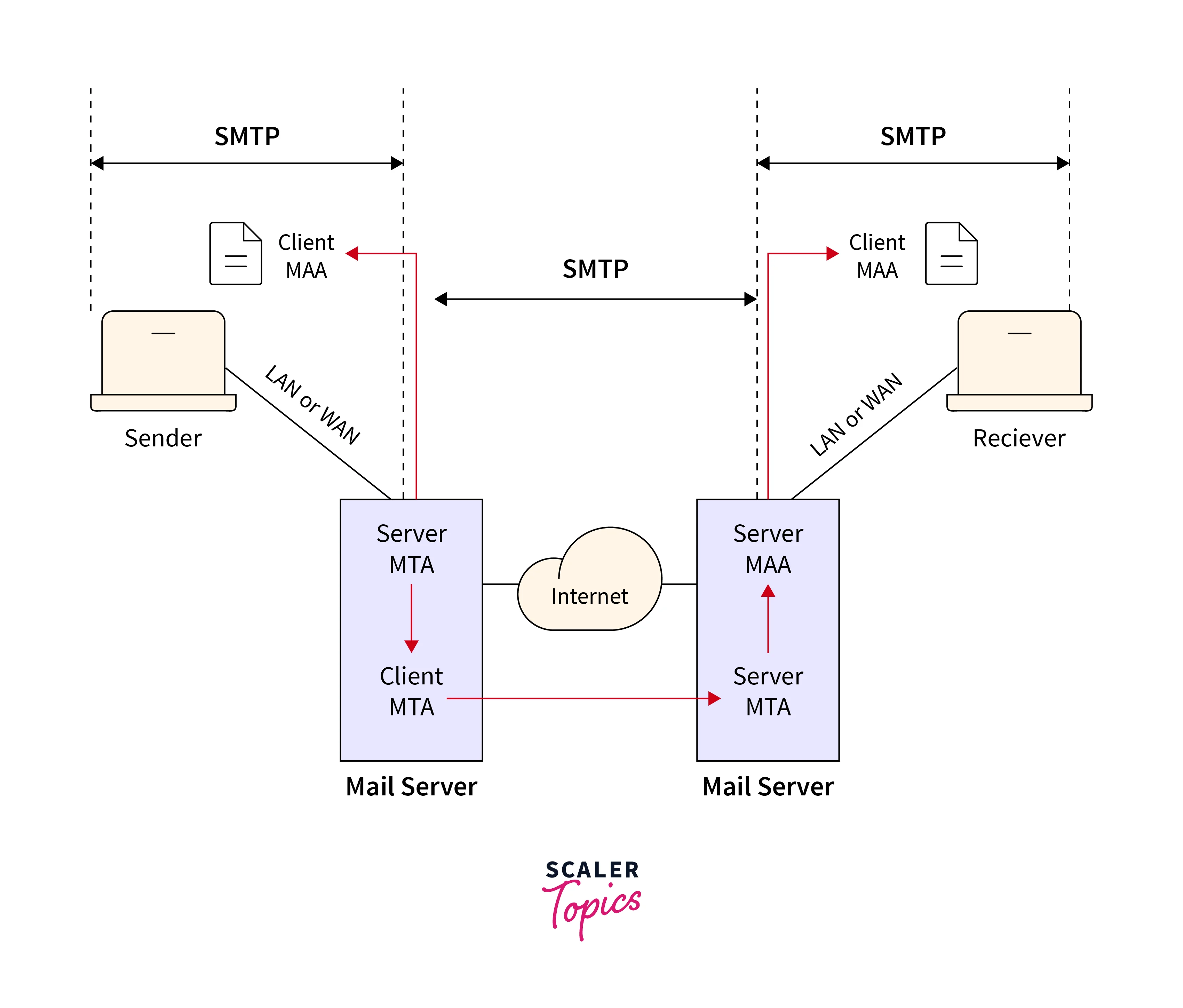
UDP Protocol:
Unlike TCP, the User Datagram Protocol (UDP) does not ensure reliable data transport. Instead, it concentrates on transmitting packets rapidly while avoiding TCP's rigorous error-checking. As a result, UDP is well-suited for real-time applications such as online gaming and video streaming.
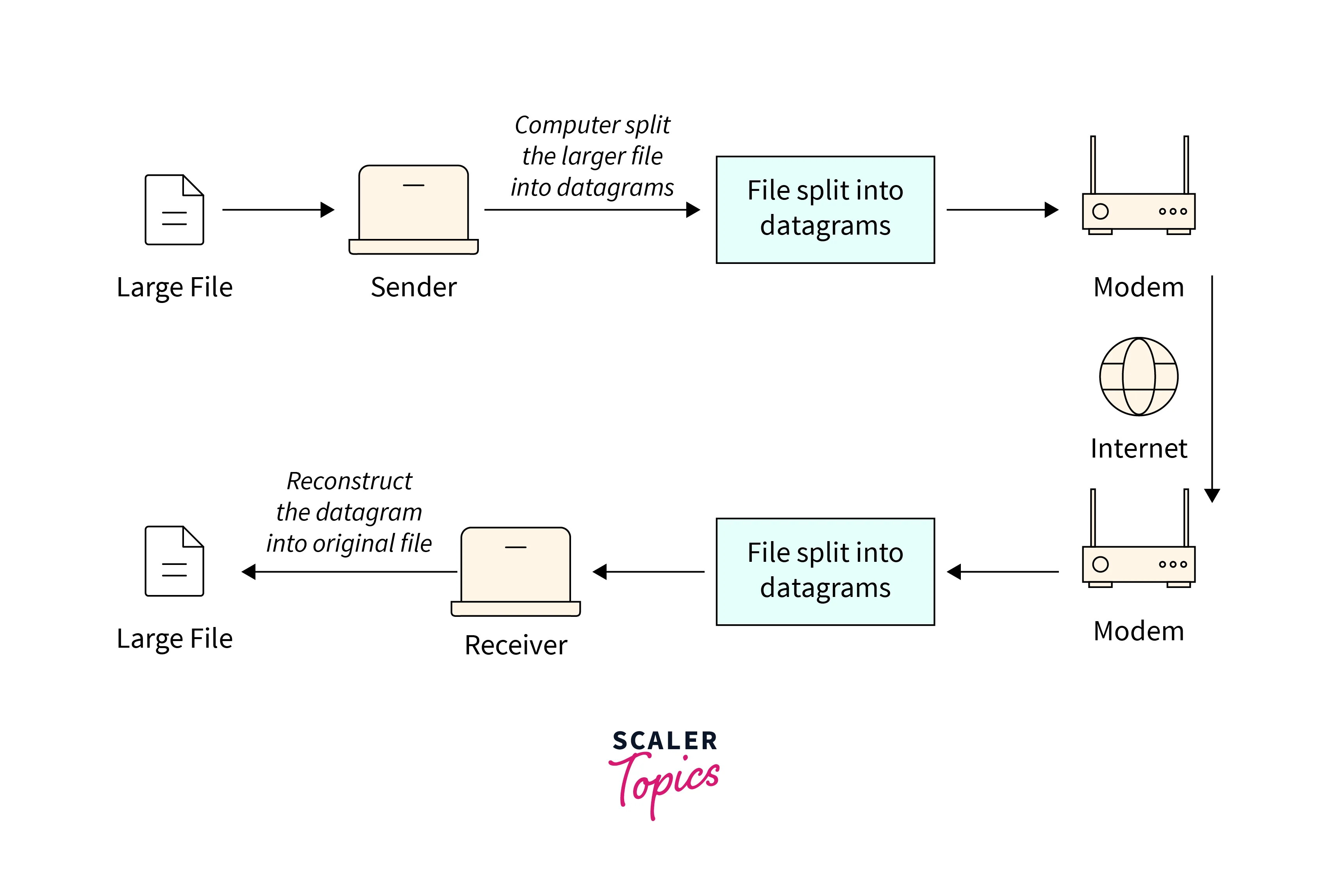
DNS Protocol:
The Domain Name System (DNS) protocol translates human-readable domain names into IP addresses, enabling users to access websites without remembering complex numerical addresses.
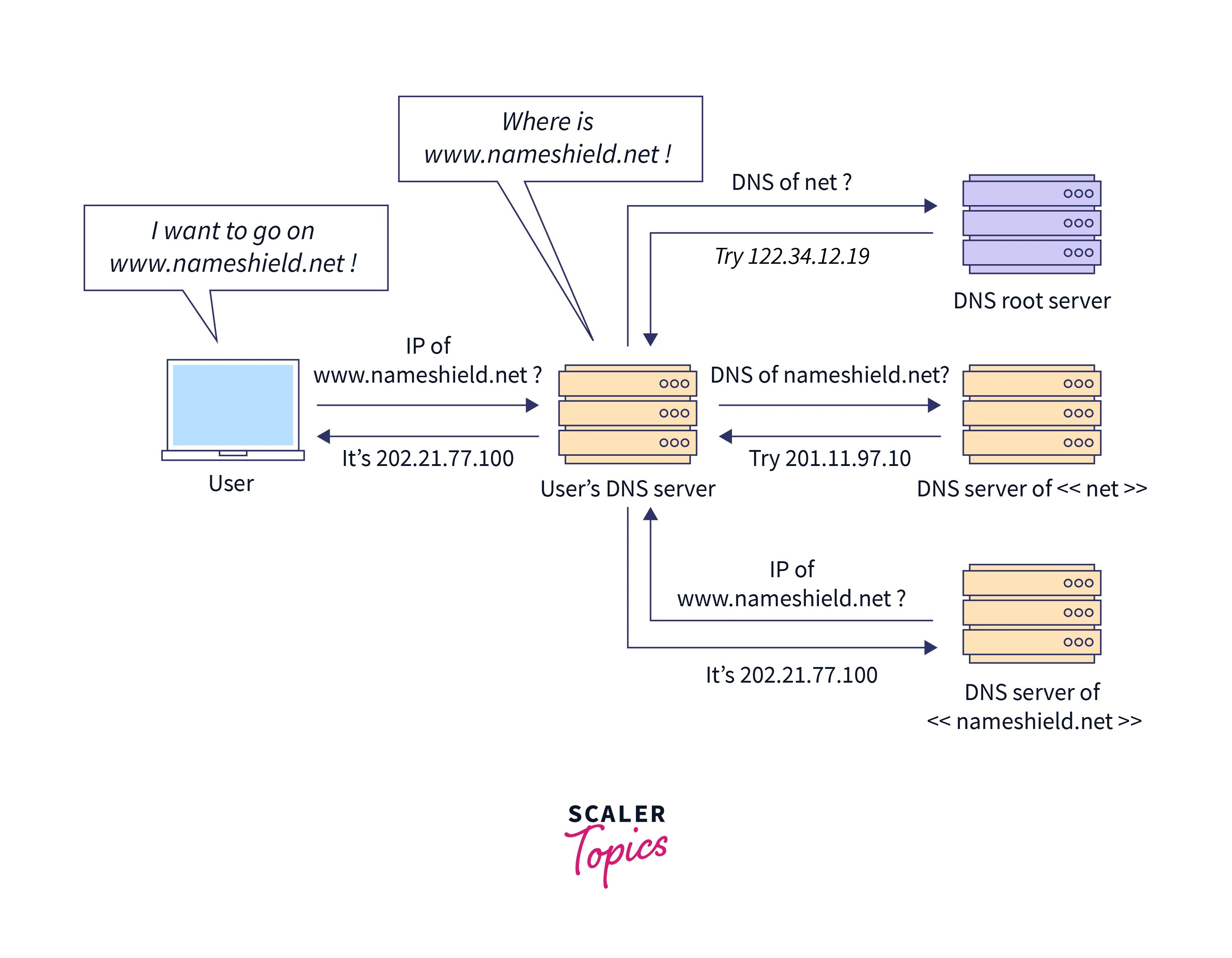
Remote Method Invocation (RMI) and Common Object Request Broker Architecture (CORBA):
Java's Remote Method Invocation(RMI) and Common Object Request Broker Architecture(CORBA) protocols support communication between dispersed objects. They allow distant objects to call methods on one another across a network.
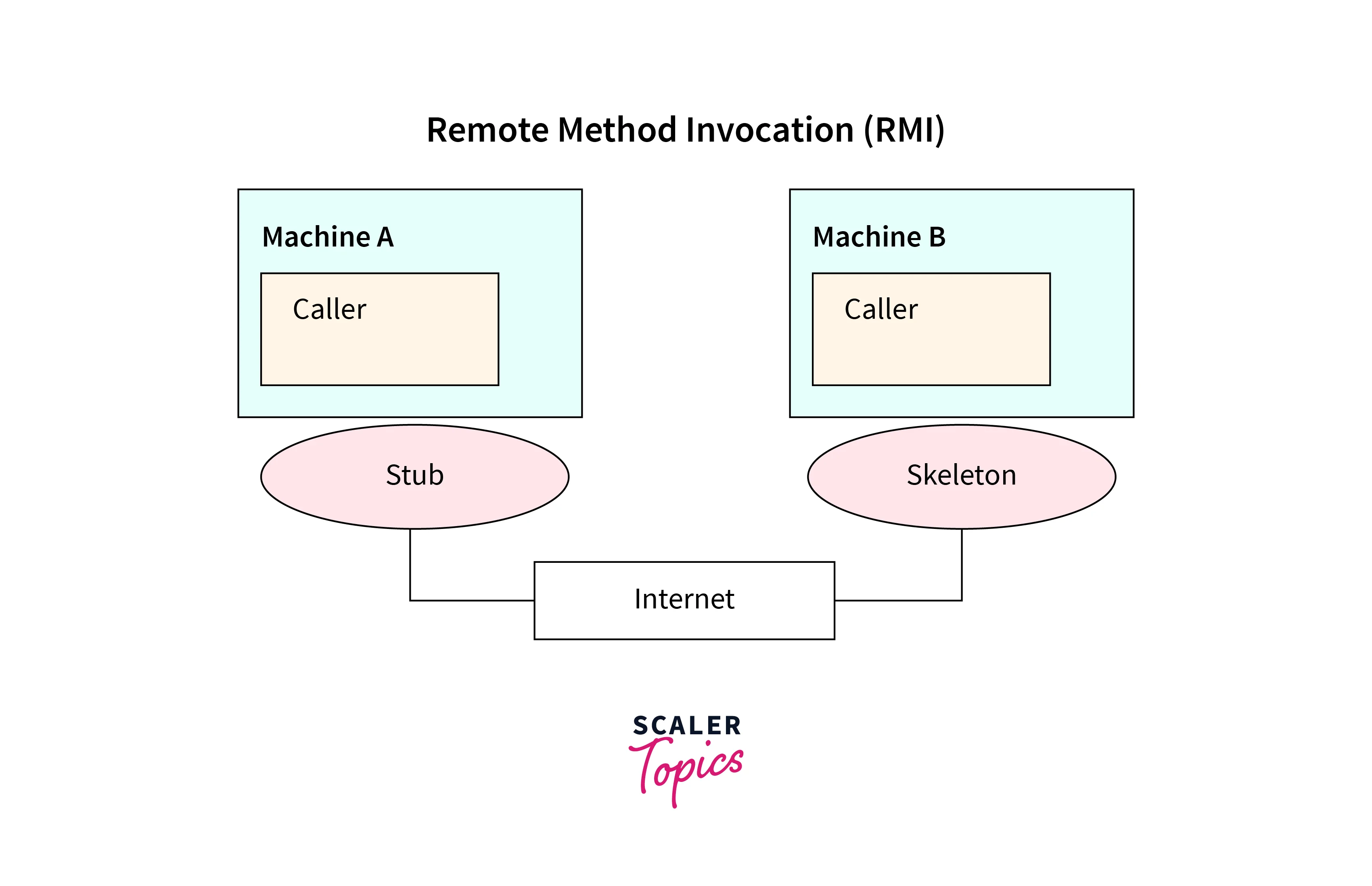
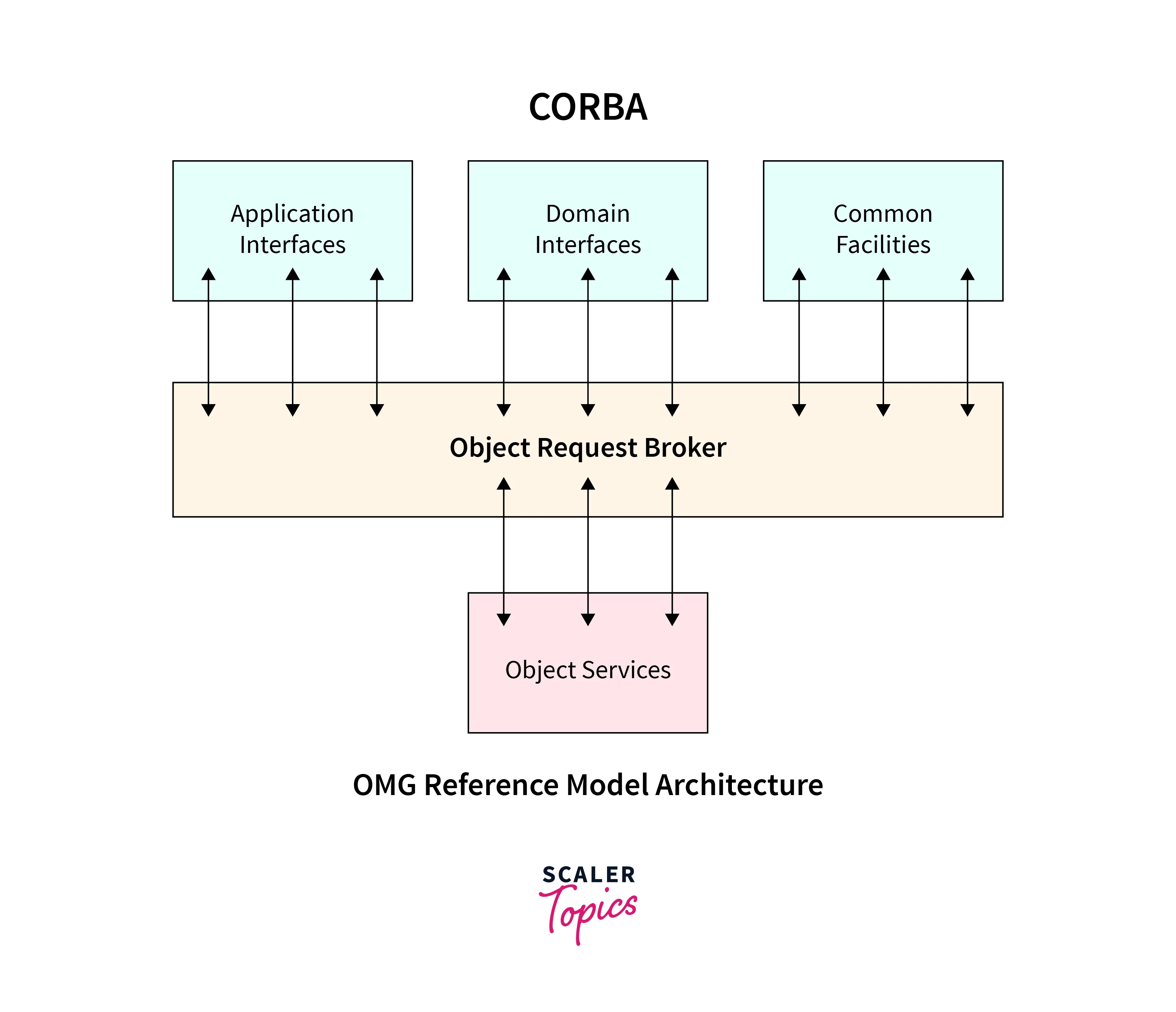
Furthermore, every Java developer moving into networked applications must thoroughly understand these basic networking protocols. Understanding their capabilities enables developers to create. Understanding their functionalities empowers developers to design robust and efficient communication mechanisms, ultimately enhancing the user experience and expanding the capabilities of Java applications in the interconnected digital landscape.
Terminologies in Networking in Java
To delve into the world of Java networking, it's essential to understand key terminologies that underpin its functionality.
-
IP Address:
An Internet Protocol (IP) address is a numerical designation issued to each networked device. It acts as a unique identifier, allowing devices to find and interact with one another.
-
Port:
In an operating system, a port is a communication endpoint that allows several programs to utilize network resources simultaneously. TCP (Transmission Control Protocol) and UDP (User Datagram Protocol) are the two types of ports, each having its own set of characteristics.
-
Socket:
A socket is a programming construct that represents the endpoint of a network for transmitting or receiving data. It combines an IP address and a port number to allow two devices to communicate.
-
Protocol:
A protocol is a collection of rules governing the communication structure and sequence sent between devices. Protocols such as TCP and UDP govern how data is transferred and received in Java networking.
-
TCP(Transmission Control Protocol):
TCP is a dependable and connection-oriented protocol that protects data integrity while in transit. It connects the sender and recipient while regulating data flow and error detection.
-
UDP (User Datagram Protocol):
UDP is a connection-less protocol that prioritizes speed and efficiency. While it does not ensure data transmission, it is appropriate for real-time communication applications.
-
URL (Uniform Resource Locator):
A URL is a web address that identifies where a resource on the internet may be. The URL class in Java enables developers to work with URLs easily.
-
InetAddress:
The InetAddress class represents an IP address. It provides methods to resolve domain names into IP addresses and vice versa.
-
ServerSocket:
A ServerSocket is used for the server-side applications to listen for incoming client connections. It waits for the clients to initiate communication.
-
SocketTimeoutException:
This exception occurs when a socket operation exceeds the specified timeout. It helps prevent applications from hanging indefinitely.
Mastering these fundamental terms lays a solid foundation for exploring the intricate world of Java networking. Comprehending these concepts allows developers to create efficient, secure, and responsive networked applications catering to diverse communication needs.
Classes of Networking in Java
Networking is critical to modern software development, allowing programs to communicate across several networks. Networking is made efficient and accessible in Java, a flexible and widely used programming language, through well-defined classes. These classes are divided into several groups, each serving a specialized function in the networking environment.
-
URL and URI Classification:
To interact with online resources, Java includes classes such as URL (Uniform Resource Locator) and URI (Uniform Resource Identifier). These classes make retrieving data from web servers, reading web pages, and accessing resources like photos and movies easier.
-
Socket Classes:
Low-level network communication requires sockets. TCP/IP communication is supported via Java's ''Socket'' and ''ServerSocket'' classes. They let programs connect to servers, exchange data streams, and develop network-based services.
-
Datagram Classes:
Java provides the DatagramSocket and DatagramPacket classes for connection-less communication utilizing UDP (User Datagram Protocol). Applications can use these classes to transmit and receive data packets without requiring a persistent connection.
-
URLConnection Classes:
The HttpURLConnection class in Java makes working with HTTP connections easier. It includes ways for sending HTTP requests, responding to them, and managing cookies and redirection. This class is very beneficial for web services and RESTful APIs.
-
Network Protocol Support:
Java has classes for dealing with certain network protocols, such as Socket, ServerSocket, and DatagramSocket, for TCP and DatagramSocket, for UDP. These classes abstract away the complexities of protocol-specific information, allowing you to concentrate on the application logic.
-
NetworkStream Classes:
The InputStream and OutputStream classes and their subclasses provide efficient data stream reading and writing. These are critical for controlling data transit between linked entities like clients and servers.
-
Network Security Classes:
The Java classes SSLSocket and SSLServerSocket provide secure communication via SSL/TLS protocols. They ensure encrypted data sharing, critical for securing sensitive data during transmission.
-
Network Management Classes: Java Management Extensions (JMX) make network administration easier. Developers may monitor and handle network-related features of programs using classes such as MBeanServer and ObjectName.
In conclusion, Java offers various networking classes to meet different communication requirements. These classes enable developers to construct strong and dependable networked applications by handling URLs, managing sockets, and guaranteeing secure connections. Understanding and successfully using these classes is a must for any Java developer looking to use the capabilities of networked environments.
Interface of Networking in Java
The strength of Java's networking capabilities stems from its strong collection of networking interfaces, which act as bridges linking your code to the broad digital world.
Socket and ServerSocket Interfaces:
The Socket and ServerSocket interfaces are at the heart of Java networking. Consider them virtual connections that allow two machines to communicate via a network. Sockets handle client-side connections, whereas ServerSockets handle incoming server-side connections. This dynamic combination serves as the backbone for the majority of networked applications.
URL and URLConnection Interfaces:
Have you ever thought about how web browsers get web pages? The URL and URLConnection interfaces in Java give the solution. A URL is a web address, and URLConnection allows you to interact with the resources at that site. Whether data collection, data retrieval from a web server, or posting information to a website, these interfaces make it happen.
DatagramPacket and DatagramSocket Interfaces:
Java provides the DatagramPacket and DatagramSocket interfaces for real-time, connection-less communication. They enable data to be sent in tiny packets, making them perfect for online gaming and video streaming. These interfaces ensure that data arrives at its destination undamaged, even in the volatile world of network communication.
InetAddress Interface:
Have you ever needed to locate a host's IP address or resolve a domain name? Java's InetAddress interface is your best bet. It includes techniques for obtaining the numerical IP address and the host's name. This interface is critical for network diagnostics and security checks.
NetworkInterface Interface:
Java's NetworkInterface interface excels in a world with several network interfaces (such as Ethernet and Wi-Fi). It allows you to analyze and customize your network interfaces, enabling your code to adapt seamlessly to different networking environments.
These Java networking interfaces allow developers to design programs that may interact, share, and cooperate throughout the digital domain. These interfaces are your trusted companions on the voyage of network development, whether you're creating a chat application, a data-fetching tool, or a multiplayer game. So, the next time you browse the web or interact with pals online, remember that Java's networking interfaces make it all possible behind the scenes.
What is Socket Programming in Java?
Socket Programming is a key idea in the field of network communication. It enables applications to interact across networks, exchanging data between devices on the same or separate networks. Java, a flexible programming language, provides comprehensive socket programming support, allowing developers to create efficient and secure network applications. This essay digs into Java socket programming, revealing its fundamental components, techniques, and practical implementation.
Socket programming comprises establishing communication channels known as sockets, which allow data to flow between client and server programs. The java.net package contains classes and methods for creating network connections, which is important to Java socket programming.
How to Establish TCP Connection?
Transmission Control Protocol (TCP) is a reliable and connection-oriented protocol for data exchange over networks. Establishing a TCP connection in Java involves creating a client socket that connects to a server socket. The process includes specifying the server's IP address and port number. Here's a simplified code snippet to illustrate:
Socket Classes
Socket and ServerSocket are two key socket classes in Java. The Socket class represents a client-side socket that allows you to communicate with the server. Servers, on the other hand, employ the ServerSocket class to listen for incoming client connections.
Methods of Socket Class
The Socket class comes equipped with methods that enable communication and information retrieval, including:
- getInputStream() and getOutputStream(): These methods provide input and output streams for sending and receiving data.
- close(): Closes the socket connection.
- connect(): Initiates the connection to the specified server.
ServerSocket Class and Methods
Server-side operations are managed by the ServerSocket class, which listens for incoming connection requests. Essential methods include:
- accept(): Waits for a client connection and returns a Socket object to facilitate communication.
- close(): Shuts down the server socket.
Example of Java Socket Programming
Let's walk through a simple example of a client-server interaction using socket programming in Java.
Client Side:
Server Side:
Java socket programming enables easy network connection between programs. Building durable and efficient networked software requires creating TCP connections, dealing with socket classes, and using their methods. Developers may design powerful apps that connect seamlessly across the digital realm by embracing socket programming.
IntelAddress
Java socket programming allows for simple network communication between programs. The ability to construct TCP connections, deal with socket classes, and use their methods is required for developing long-lasting and efficient networked applications. By adopting socket programming, developers may create powerful programs that interact smoothly throughout the digital domain.
Methods of IntelAddress:
-
findDuplicates():
This method enables the detection of duplicate elements within a dataset. By leveraging advanced algorithms, it swiftly identifies duplicate values, ensuring data accuracy.
-
removeNullValues():
Dealing with null values can be quite the ordeal. IntelAddress's removeNullValues() method intelligently scans data, seamlessly identifying and eliminating null values.
-
sortAscending():
Sorting data shouldn't be complex. This method arranges elements in ascending order using a smart sorting algorithm, boosting efficiency.
Example
Let's explore these methods through practical Java examples:
Output:
IntelAddress appears as a game changer in today's increasing data development, simplifying complicated data processing jobs using intelligent ways. Its user-friendly approach boosts productivity by letting developers focus on designing significant apps rather than dealing with data complexities. So, why complicate when IntelAddress can simplify? Try it out and see how it changes your data-handling efforts.
URL Class
Understanding and dealing with Uniform Resource Locators (URLs) is critical in web programming. URLs are web addresses that connect us to the tremendous amount of information and resources available online. The URL class in Java, a flexible programming language, provides a useful tool for working with URLs. This class is part of Java's java.net package and provides a variety of methods for elegantly dissecting, constructing, and manipulating URLs.
Components of URL Class
The URL class is intended to deconstruct a URL into its basic components, making it easier to access and alter specific portions. These components include Protocol, host, port, route, query, and reference. The protocol specifies the manner of communication, such as HTTP or HTTPS, while the host specifies the domain name or IP address. The port represents the communication channel, and the path signifies the resource's location on the server. The query allows passing parameters and reference points to a specific section within the resource.
Methods of URL Class
The URL class has a collection of methods to interact with these components. Here are some notable methods:
-
Constructor Methods:
The URL class provides constructors to create a URL object from a given URL string. For example:
-
Accessors Methods:
Accessor methods retrieve individual URL components, allowing developers to inspect their structure. Examples include getProtocol(), getHost(), getPort(), getPath(), getQuery(), and getRef().
-
Modifier Methods:
Modifier methods allow you to modify specific URL components. Although URLs are generally immutable, these methods return a new URL with the desired changes. A new URL() can create a new URL object.
Examples of URL Class Methods
Let's delve into practical examples of using URL class methods:
-
Parsing a URL:
-
Modifying a URL:
The URL class in Java simplifies the frequently complicated operation of working with online URLs. Its techniques give a systematic way of analyzing, accessing, and changing distinct URL components. By implementing the URL class into your Java programs, you acquire a valuable tool for easily navigating the complex network of the internet.
FAQs
Q. What is Java networking all about?
A. Java networking is the skill of creating connections and communicating between multiple devices via a network using the Java programming language.
Q. What is the role of a "Socket" in Java networking?
A. A socket is an endpoint for data sent or received via a computer network. The Socket class in Java supports this connection by allowing data to be sent between client and server.
Q. What's the role of InetAddress in Java networking?
A. InetAddress handles IP addresses and domain names, aiding in identifying network hosts. This class offers methods to get local or remote addresses, perform hostname resolution, and more.
Q. How does Java support TCP and UDP protocols?
A. Java's Socket and ServerSocket classes support the TCP, a reliable connection-oriented protocol. Java provides the DatagramSocket class for UDP, enabling connection-less, fast data transmission.
Conclusion
- Networking in Java is the foundation of modern applications, allowing for the smooth connection of devices across networks. Its frameworks and classes enable developers to create dependable networked systems.
- Sockets are at the heart of Networking in Java, allowing clients and servers to exchange data. Understanding socket programming is essential for developing real-time, responsive apps.
- Understanding network protocols such as TCP and UDP is critical. TCP ensures reliable data transmission, whereas UDP provides speed but at the expense of dependability. The requirements of the application determine the appropriate protocol.
- In networking contexts, Java's multithreading capabilities shine. Managing several connections simultaneously improves efficiency and responsiveness but needs careful synchronization to minimize conflicts.
- With cyber-attacks on the rise, network security is critical. Java supports SSL/TLS encryption for secure communication, protecting sensitive data from prying eyes.
- Java Remote Method Invocation (RMI) allows objects to interact across various Java Virtual Machines, enabling distributed computing. Understanding RMI allows for the development of sophisticated distributed applications.
